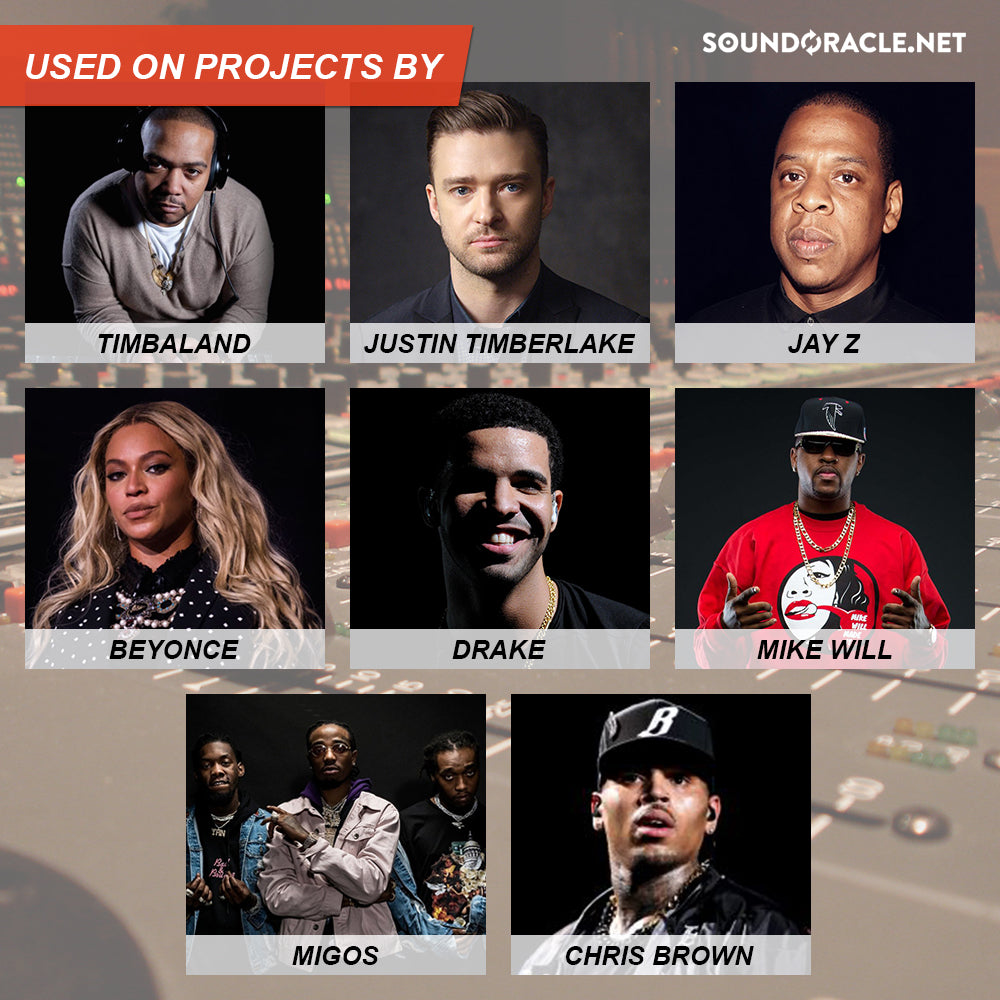
From Chaos to Clarity:
How the PARA System Can Transform Your Music Production Career
Written by SoundOracle
If you're a music producer, you know that creativity alone isn't enough to succeed. The PARA system, developed by Tiago Forte, can help you streamline your workflow and achieve better results. By dividing your work into Projects, Areas, Resources, and Archives, you'll be able to better manage your projects and even organize your sounds on your hard drive.
In this article, we'll show you how to use the PARA system to improve your organization and productivity. Whether you're a seasoned music producer or just starting out, this system can be a game-changer for your career.
Understanding the PARA System
The PARA system consists of 4 parts that all work together to help individuals organize their information and tasks effectively. Here's a closer look at each of the parts and how they can be applied to a music production career:
1. Projects: As a music producer, your ongoing music production projects would fall under this category. This could include everything from upcoming album releases to collaborations with other artists. By organizing all your active and ongoing projects together, you can easily see what needs to be prioritized next and make progress toward your goals.
2. Areas: Your areas of responsibility as a music producer could include work, family, health, and more. Organizing these areas together allows you to see a holistic view of your life and ensure that you're making progress in all the areas that matter to you.
3. Resources: Music production resources such as sample packs, sound libraries, and reference materials are crucial to creating high-quality music. Grouping all your music production resources together under the Resources category can help you find what you need quickly and easily, saving you time and reducing stress.
4. Archives: Completed music production projects and reference materials can be archived together for easy retrieval. This allows you to reflect on past projects and learn from them, as well as access completed work when needed.
Additionally, organizing your sounds on your hard drives is also an important aspect of the PARA system. You could create separate folders for drums, synths, vocals, and more, and organize them according to your own personal system. This can help you find the sounds you need quickly when working on a project.
Overall, the PARA system can be a powerful tool for music producers looking to improve their productivity and reduce stress. By organizing projects, areas, resources, and archives together, you can stay on top of your work and make progress towards your goals.
Applying the PARA System to Music Production
The system can be adapted to the music production industry. Music producers can use project management software like Trello or Asana to organize and track tasks related to specific projects. Another way to apply the PARA system is by using a task manager like Todoist to keep track of different areas of responsibility, such as mixing, mastering, and promotion.
Common challenges music producers may face when implementing the PARA system include adapting to new tools and systems, managing multiple projects and tasks simultaneously, and maintaining consistency and focus over time. To overcome these challenges, producers can start with small steps and gradually incorporate the PARA system into their workflow. They can also leverage automation and delegation tools to streamline their tasks.
Tools and software that can be used to support the PARA system in music production include project management software like Trello, Asana, or Basecamp, task managers like Todoist or Things, and cloud-based storage and collaboration tools like Google Drive, Dropbox, or OneDrive.
Examples of how music producers can use the PARA system in their work include creating a board in Trello for each album or EP project and adding cards for each task related to writing, recording, mixing, mastering, and promotion. They can use labels and due dates to track progress and prioritize tasks. They can also use Todoist to manage different areas of responsibility, such as production, administration, and marketing, by creating projects for each area and adding tasks for each specific task or project. Finally, they can use cloud-based storage and collaboration tools like Google Drive to organize and store project files, samples, and other resources.
3 Examples of the PARA System in Action
Tiago Forte, a productivity expert and founder of Forte Labs, successfully implemented the PARA system to organize his digital life. He uses Evernote as his primary tool and categorizes his work and personal projects, notes, and files by project, area, resource, and archive. Music producers can use the PARA system to organize their sounds on their hard drives, categorizing them by project, instrument, and type, such as drums, synths, and samples.
David Sparks, a lawyer and productivity blogger, also uses the PARA system to organize his work and personal life. He uses a combination of tools, including Evernote, Apple Notes, and Dropbox. Music producers can adapt the PARA system to their workflows by categorizing their projects, notes, and files by genre, BPM, and key, and using note-taking apps to keep track of song ideas, lyrics, and other notes.
One challenge when implementing the PARA system is getting started. To overcome this, start small and focus on one area of your digital life at a time, such as organizing music production files, and then move on to personal files and notes. By implementing the PARA system, music producers can stay organized, save time, and focus on creating great music.
Tips for Using the PARA System Effectively
To make the most of the PARA system, music producers should prioritize organization and focus. A clear system for labeling and categorizing sounds on hard drives makes it easier to find specific files when needed. Producers should take the time to name and categorize each file so they can quickly identify sounds for a project. Additionally, regularly reviewing and updating sound libraries by removing unused files and adding new ones keeps the library fresh and prevents clutter.
To avoid common mistakes, it's important to schedule regular maintenance of the library and file organization. It's easy to get caught up in the creative process, but neglecting the administrative side of production can lead to lost files and wasted time searching for sounds. Producers should set aside time each week to organize and maintain their files.
Actionable tips for using the PARA system more effectively include establishing a naming convention for files, creating clear categories and subcategories for the sound library, and regularly backing up files to avoid data loss. By following these tips and best practices, music producers can streamline their workflow, leading to a more efficient and productive music production process.
Common Mistakes to Avoid When Using the PARA System
When using the PARA system, music producers should avoid the mistake of assuming that each category must have an equal number of files or samples, as this can lead to uneven organization. Prioritizing frequently used sounds and categorizing them accordingly can help avoid this.
Another mistake to avoid is failing to consistently organize files and samples on the hard drive, which can lead to a cluttered and disorganized system. Regular sorting and categorizing, along with folder hierarchies and naming conventions, can help keep things organized.
Using too many categories or subcategories is also a common mistake that can lead to confusion and difficulty finding the right sounds. To avoid this, music producers should keep things simple and focused, with only a few high-level categories and clear, descriptive names for each subcategory. By simplifying and streamlining their organization system, producers can make the most of the PARA system and improve their workflow
Conclusion
In conclusion, the PARA system is a powerful tool for music producers to improve their organization and productivity. By understanding the principles of the system and applying them to their work, music producers can better manage their time, prioritize tasks, and reduce stress. The benefits of using the PARA system are numerous, including increased productivity and improved collaboration with team members. Through case studies and examples, we have seen how music producers have successfully implemented the PARA system in their work, adapting it to their specific workflows and needs. By following best practices and avoiding common mistakes, music producers can maximize the benefits of the PARA system and achieve success in their careers. So if you're a music producer looking to stay on top of your game, give the PARA system a try and see how it can transform your work!
FAQs
- What is the PARA system, and how can it benefit music producers?
The PARA system is a framework for organizing information and tasks into four categories: Projects, Areas, Resources, and Archives. By using this system, music producers can improve their organization and productivity, prioritize their tasks, and reduce stress. - What tools and software can be used to support the PARA system in music production?
Project management software like Trello, Asana, or Basecamp, task managers like Todoist or Things, and cloud-based storage and collaboration tools like Google Drive, Dropbox, or OneDrive can all be used to support the PARA system in music production. - What are some common challenges music producers face when implementing the PARA system, and how can they overcome them?
Some common challenges include adapting to new tools and systems, managing multiple projects and tasks simultaneously, and maintaining consistency and focus over time. To overcome these challenges, producers can start with small steps and gradually incorporate the PARA system into their workflow. They can also leverage automation and delegation tools to streamline their tasks. - How can music producers use the PARA system to organize their sounds on their hard drives?
Music producers can create separate folders for drums, synths, vocals, and more, and organize them according to their own personal system. By categorizing and naming each file, producers can quickly and easily find the sounds they need when working on a project. - What are some tips for using the PARA system effectively in music production?
To make the most of the PARA system, music producers should prioritize organization and focus. They should establish a naming convention for files, create clear categories and subcategories for their sound library, and regularly back up their files to avoid data loss. Additionally, scheduling regular maintenance of the library and file organization is crucial to avoiding clutter and disorganization.
Final Thoughts
The PARA system is an incredibly useful tool for music producers looking to improve their organization and productivity. By breaking down their work into Projects, Areas, Resources, and Archives, music producers can prioritize their tasks, manage their time effectively, and reduce stress. While there may be challenges when implementing the system, such as adapting to new tools and systems or managing multiple projects and tasks, these challenges can be overcome by starting small and gradually incorporating the PARA system into your workflow. By following best practices and avoiding common mistakes, music producers can maximize the benefits of the PARA system and achieve success in their careers. So why not give it a try and see how it can transform your work?


